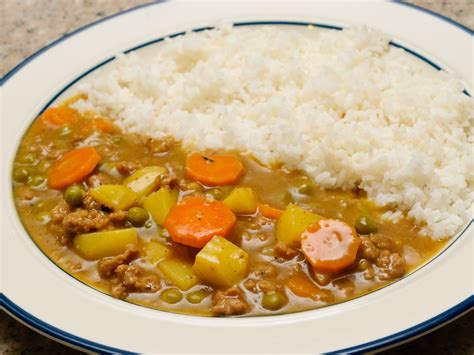How to Make Delicious Curry: A Step-by-Step Guide
Curry is a beloved dish across the globe, known for its rich flavors and aromatic spices. But the term "curry" encompasses a vast range of dishes, varying wildly depending on regional influences. This guide will walk you through creating a foundational curry, adaptable to your preferred spice level and ingredients. We'll focus on a versatile chicken curry, but the principles apply to vegetarian or other meat-based versions.
Choosing Your Curry Base: The Foundation of Flavor
The foundation of any good curry lies in its base. This typically involves sautéing aromatics in oil, then adding spices and often a paste. Let's explore some options:
Option 1: Simple Sauté
- Ingredients: 1 large onion (finely chopped), 2 cloves garlic (minced), 1 inch ginger (grated), 2 tablespoons vegetable oil.
- Method: Sauté the onion in oil until softened, then add garlic and ginger, cooking until fragrant (about 1 minute). This is a great base for a milder curry.
Option 2: Spice Paste Powerhouse
- Ingredients: 1 tablespoon each of ground coriander, cumin, turmeric, chili powder (adjust to taste), 1 large onion, 2 cloves garlic, 1 inch ginger.
- Method: Blend all ingredients into a smooth paste using a food processor or blender. Sauté this paste in oil until fragrant, adding depth and complexity to your curry. This method is ideal for a bolder, more flavorful curry.
Building Your Curry: Ingredients & Techniques
Once you've created your base, it's time to add the main ingredients and build layers of flavor. For this chicken curry example, we'll use:
- Protein: 1 lb boneless, skinless chicken thighs (cubed)
- Vegetables: 1 large onion (chopped), 1 red bell pepper (chopped), 1 can (14 oz) diced tomatoes, 1 can (13.5 oz) coconut milk
- Spices (in addition to those in your base): 1 teaspoon garam masala, ½ teaspoon ground cinnamon, ¼ teaspoon cayenne pepper (optional, for extra heat).
- Fresh Herbs: Cilantro, for garnish
Step-by-Step Instructions:
- Brown the Chicken: After sautéing your chosen base, add the cubed chicken and cook until browned on all sides. This step adds depth of flavor.
- Add Aromatics and Spices: Incorporate the chopped onion and red bell pepper. Cook until softened. Stir in the additional spices (garam masala, cinnamon, cayenne, if using).
- Simmer and Blend: Add the diced tomatoes and coconut milk. Bring to a simmer, then reduce heat to low and cook for 20-30 minutes, or until the chicken is cooked through and the sauce has thickened slightly. For a smoother sauce, you can blend a portion of the curry using an immersion blender.
- Garnish and Serve: Garnish with fresh cilantro before serving. Enjoy your homemade curry with rice or naan bread!
Tips for the Perfect Curry:
- Adjust the spice level: Start with less chili powder and add more to taste.
- Don't overcrowd the pan: If you're working with a large batch, cook the chicken and vegetables in batches to prevent steaming.
- Taste and adjust: Seasoning is key! Taste your curry throughout the cooking process and adjust spices and salt as needed.
- Experiment with vegetables: Feel free to add other vegetables like potatoes, carrots, peas, or spinach.
- Make it your own: Curry is a wonderfully adaptable dish. Experiment with different spice combinations and ingredients to find your perfect recipe.
This guide offers a solid foundation for crafting delicious curries. Remember, the most important ingredient is your willingness to experiment and have fun! With practice, you’ll be creating restaurant-quality curries in no time. Happy cooking!
